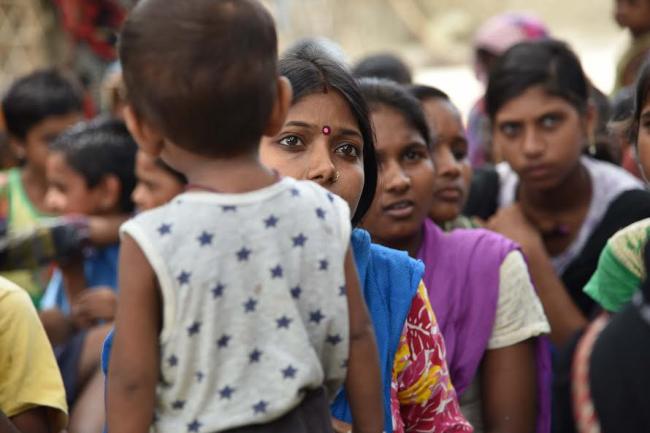
As the latest Census (2011) data reveals, there are over 13 million adolescent girls who are married between 10 to 19 years of age and a startling 3.8 million adolescent girls in India have children and are shouldering the responsibilities of motherhood, oblivious to the celebration of mothers worldwide on the second Sunday of every May.
Of these 3.8 million underage mothers 1.4 million had 2 or more children, even before completing adolescence. A brief analysis of their education profile reveals that, 39% of girls who were illiterate had begun child bearing, compared to 26% among the girls who were literate, proving that even a little education goes a long way in empowering girls.
While the above stated figures are from Census 2011, the scenario is far from showing visible signs of improvement. The recently released NFHS 4 (National Family Health Survey 2015-2016) data corroborates this situation, with an estimated 4.5 million girls in India between 15-19 being pregnant or mothers at the time of the survey.
The scenario is far from different in the Eastern and North-Eastern states either. As Census 2011 data reveals, among the married adolescent girls between 10-19 years in West Bengal, more than 50% of the girls who were illiterate have reached motherhood, compared to 37% of the girls who were literate. According to the analysis of Census data done by CRY – Child Rights and You, in Assam, Manipur, Jharkhand, Bihar and Odisha too adolescent girls with access to education are far less vulnerable to underage marriage and motherhood (see graph below).
Komal Ganotra, Director, Policy, Research and Advocacy at CRY – Child Rights and You said, “Being married as child brides at a young age and having born children soon thereafter, these girls suffer far reaching implications mentally and physically, which further impacts their children as well. Dismal maternal care and lack of adequate nutrition especially when their bodies are too young to bear childbirth result in health implications like anaemia and risk of morbidity for the mother and a child who is undernourished.”
Early marriage and motherhood deprive girl children of their right to education and as a vicious cycle, lack of access to schooling makes girl children vulnerable to get married off early. It isn’t shocking that 39 percent of adolescent married girls (10-19 years) who have children are illiterate.
Higher the education of mothers, better are the health outcomes for their children. The NFHS 4 data shows that stunting amongst children whose mothers had no education was 51 percent, whereas prevalence of stunting reduced to 31% for children whose mothers had completed school education. Similarly, 67% of the children whose mothers completed secondary level of education had access to full course of immunization, whereas only 52% of children whose mothers had no education were reported to complete full immunization programme. Similar trends are seen for other health-related indicators like incidence of under-weight children, percentage of institutional deliveries etc.
“Access to affordable secondary education is extremely critical in order to empower girls since it not only lowers the probability of child marriage, it has a direct impact on their life choices, their own health and the health of their children. It is a cycle of positive change as education also empowers girls to stand up for their rights. Our experience on ground has shown how access to schools has transformed the lives of girls in entire communities, who would otherwise have given in to expected normalcy of child marriage.” Komal Ganotra added.
Support Our Journalism
We cannot do without you.. your contribution supports unbiased journalism
IBNS is not driven by any ism- not wokeism, not racism, not skewed secularism, not hyper right-wing or left liberal ideals, nor by any hardline religious beliefs or hyper nationalism. We want to serve you good old objective news, as they are. We do not judge or preach. We let people decide for themselves. We only try to present factual and well-sourced news.







